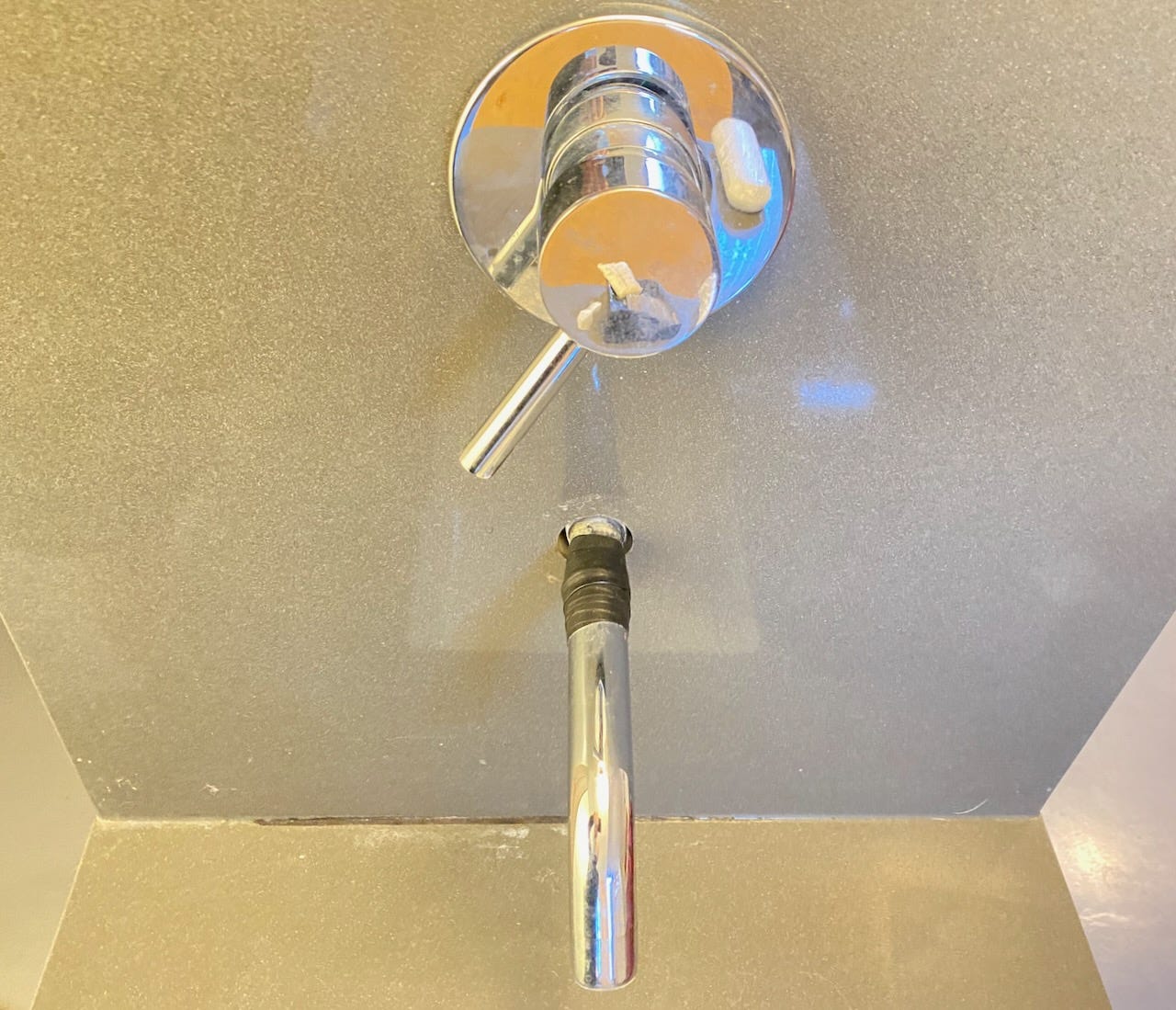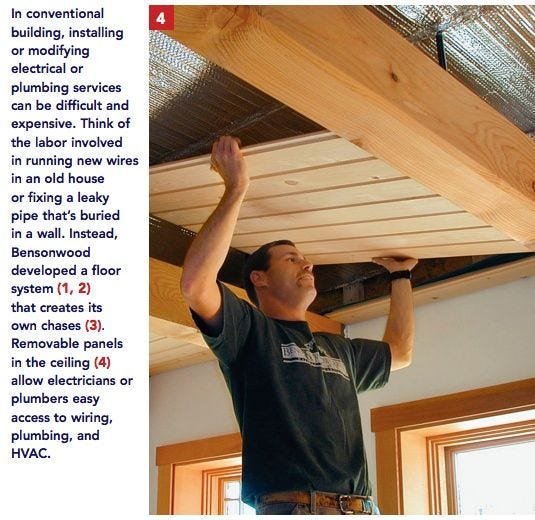Lessons from a leaky faucet
I have a lifetime of mistakes to learn from; It's time to turn them into a book.
A few months ago, I wrote a post titled We hate our bathroom sink, describing in detail how the sink is terrible because of its shape and size. I noted that I placed the faucet high above the sink to make it easy to wash hands or hair under it. Now I am writing that we hate our bathroom faucet. Note the black tape around it; that is covering a split in the metal in the spout.
A few weeks ago, water started shooting out the side of it. As best as I can figure it out, the plumbers used a bit too much pressure on the pipe wrench installing the spout, and squished it out of shape. This was mostly covered by the flange, but after 10 years, the little fold in the metal gave way, and here we are, spraying water all over our floor.
Here is where it gets interesting. I called the plumber, who said he would be happy to install a new one for me if I found it. I started emailing the manufacturer, Rubi, who promised to respond to requests in 48 hours. I emailed them again after a week. It is now two weeks, and I have not had a response. The phone calls will start today, but I may never find a replacement spout if the designs have changed.
And what if I cannot find a new spout? Here is where I forgot or ignored one of my mantras- repairability. To replace the faucet and taps, I will have to tear out the entire panel of Caesarstone (yes, I used Caesarstone, which is being banned in many places.)
I should have learned from Stewart Brand, John Habraken and Tedd Benson of Bensonwood that houses are like people; different parts wear out at different rates. We should design our houses so that we can fix them more easily, as Tedd does with his Open-Built system where the guts of the plumbing are in accessible chases.
I knew this stuff a decade ago, but I ignored it, and now I am paying the price. This is not just a leaky tap but an object lesson, a demonstration of a bigger principle of design. I have had a lifetime of mistakes and demonstrations to learn from; It’s time to document them and share them.
The New Manual of the Dwelling
A year ago, I started a series here titled The New Manual of the Dwelling. Le Corbusier wrote the original a hundred years ago, a page and a half in “Towards a New Architecture.” I am going to turn this into my next book. It will be a bit longer than Le Corbusier’s, but a lot has happened in a hundred years, and Corb was only 33 years old when he wrote the original; I am a bit older and have made more mistakes.
It will be different from the wonderful Pretty Good House book (my review here) in that I cannot write a how-to book, but then neither could Le Corbusier. It will be more of a what-not-to-do book.
I will expand on what I have already written here (links below) and intend to continue serializing it once a week.
I am also going to put the new content behind the paywall. It is going to be my main project for the next year, and because it will eventually be a book, I do not want it out in the wild for everyone to see. I have also had so many subscribers supporting me financially already, and I want to thank them with something special. And of course, serializing the book this way will help support me and enable me to concentrate on it.
If anyone really wants to read it but can’t afford yet another subscription, please email me.
For a taste of things to come, here are the posts I have written so far. I seem to have spent a lot of time in the bathroom.
Based on Le Corbusier’s Manual of the Dwelling, this is a series where we develop a manual for understanding the homes we have today and what they must become – resilient in the face of change, supportive of our health and well-being. Efficient but, more importantly, sufficient – just what we need to be happy, healthy, and comfortable.
The new Manual of the Dwelling
Le Corbusier was on to something in 1927. We pick up the ball.
The New Manual: Light, Air and Openness
A look at the roots of modern architecture and fighting disease with design.
The new manual: What is the purpose of a window?
Do we need them at all? If so, how many and how big?
It's an "in-between" zone that serves many functions.
Why your toilet should have a room of its own
New studies confirm that flushing pumps out pathogen plumes, even when the lid is closed.
How careless design of showers is killing, maiming, and scalding people of all ages:
The standard tub/shower combination is lousy at either function and should be put out of its misery.
We should rethink the toilet from first principles:
It was a mistake from the day it came into our homes.
At the Interior Design Show: the latest in killer bathtubs and silly sinks:
My wife asks, "Are you going to keep flogging this? Enough already!" But it just gets worse every year.
Why the "bathroom of the future" always fails us:
In a world full of incredible technology and ingenuity, why are we stuck in bathrooms from a hundred years ago?
Studies show that using them can add years to your life.
Kitchen bloat is everywhere, from tiny homes to monster homes
It's time to return to the closed, separate kitchen and to lose the giant gas stoves.
Don't say goodbye to the kitchen (or dining) table
Don't listen to the designers; the kitchen island is no replacement for sitting down at a proper table.
What will the kitchen of the future be like?
It's always changing, depending on the preoccupations of the time it's envisioned.
Antimicrobial resistance will change the way we live
It will affect the designs of our homes and our cities, as it did a hundred years ago.




















I think a pattern language approach would be worthwhile.
Might you be able to make a pattern language for it?